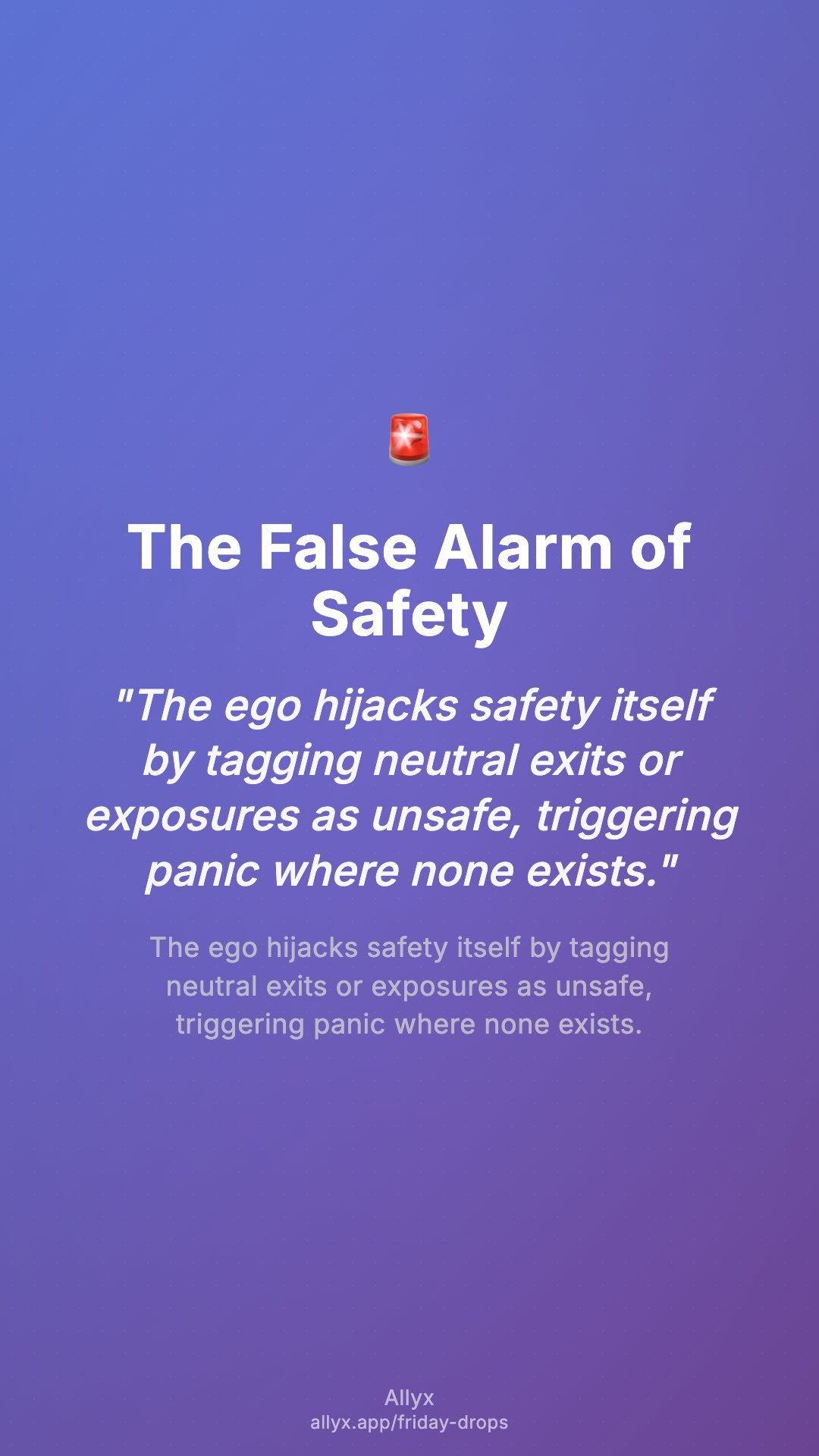The False Alarm of Safety
The ego hijacks safety itself by tagging neutral exits or exposures as unsafe, triggering panic where none exists.
Friday, September 19, 2025
Metaphorical Narrative
Imagine standing at the doorway of a familiar café.
The handle is cool, the air is calm — but suddenly, alarms blare in your head.
Red lights flash on invisible walls: “Exposed! Unsafe! Caught!”
The building hasn’t changed. The panic is entirely fabricated.
Core Insight
This is the most cunning hijack: safety itself is turned against you. The ego applies danger labels to neutral moments — leaving a room, standing in a crowd, closing a door. The body responds with real panic even when no threat exists.
The mechanism is a hijacked somatic tag. By equating exposure with danger, the ego forces retreat and blocks presence. Each escape reinforces the loop, making safety feel conditional, fragile, and forever at risk.
Saturday Experiment
When the false alarm hits:
- Say aloud: “Tag, not fact.”
- Take six grounding breaths and name the signal: “tight chest, shaky legs.”
- Do one micro-action against the alarm: step out the door, wave, or touch the handle again.
Sunday Reflection
How many alarms dissolved once the body tested reality?
In third person: “He stood in the doorway, felt the panic, and proved it false.”

